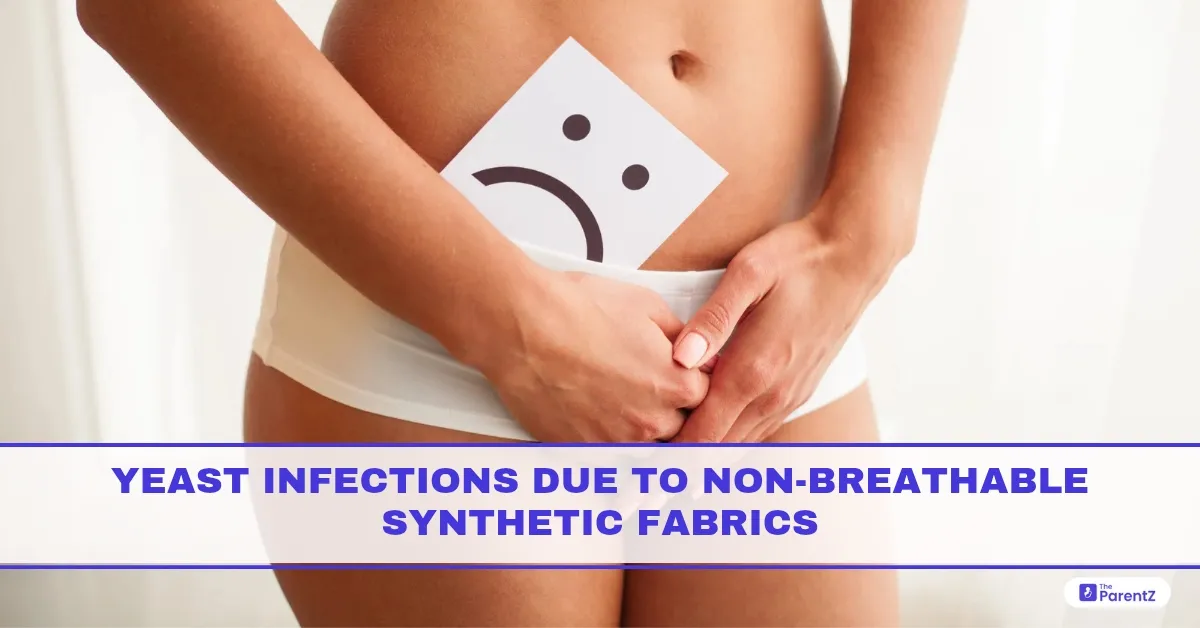There’s nothing wrong with loving bright activewear, stretchy shorts, or cartoon-themed underwear. Clothes can be fun, expressive, and oh-so-comfortable. But what many don’t know is that some fabrics, especially the tight, synthetic ones, can secretly irritate your skin and even lead to something called a yeast infection.
Sounds a little strange? Don’t worry. This article is here to explain what happens under your clothes, why your skin sometimes rebels, and how to make choices that keep things cool and comfy down there.
What Is a Yeast Infection?
First things first: yeast is not a bad guy.
Yeast is a type of fungus that naturally lives on the skin, inside the body, and yes, even in private parts. It usually behaves itself and stays in balance with other good microorganisms. But when the environment becomes too warm, damp, or tight, yeast can grow too much, and that’s when the trouble starts.
This overgrowth can cause:
- Itching (especially in the groin, buttocks, or folds of skin)
- Red rashes or small bumps
- White patches or discharge (more common in older children and teens)
- Burning or discomfort when sweating or moving around
It can affect anyone, regardless of gender or age, especially in warm, humid climates or after exercise. Babies, toddlers, tweens, teens, yeast isn’t picky.
Why Synthetic Fabrics Can Be a Problem
Let’s break it down. Clothes made of non-breathable synthetic fabrics like polyester, nylon, spandex, lycra, or rayon can trap heat and sweat against the skin. These fabrics don’t let air flow freely. That means:
- Moisture stays trapped (hello, sweat)
- Heat builds up (especially in tight areas)
- Friction increases (causing redness and irritation)
- And this creates the perfect warm, damp world that yeast absolutely loves
If you’ve ever noticed discomfort after wearing tight leggings, fitted underwear, or a costume made of artificial materials, you’re not imagining it.
Common Triggers and Situations
Yeast infections from clothing don’t happen overnight, but certain everyday situations can quietly set the stage:
- Wearing the same tight synthetic underwear all day
- Not changing out of sweaty clothes after play or sports.
- Sleeping in damp or warm pajamas made from non-cotton material
- Wearing diapers or pull-ups for too long without air time (for younger kids)
- Frequent use of body powders, sprays, or scented wipes that upset the skin’s balance
Even wearing synthetic swimsuits for hours in humid weather or not drying off properly can favor yeast.
How to Spot the Early Signs
Yeast infections often start subtly, and the symptoms might be confused with regular irritation or heat rash. Here’s what to look for:
- Itchy folds of skin, especially where clothes cling tightly
- Pink or red patches, sometimes with a defined edge
- Dry, flaky, or shiny areas that burn or tingle when touched
- Mild swelling or chafing that won’t go away easily
If any of these signs pop up and stick around for a few days or get worse, it’s best to talk to a parent or doctor. Yeast infections are common and treatable, especially when caught early.
Smart Tips to Stay Fresh and Fungal-Free
The good news? You don’t have to give up your favorite clothes. Just make some fabric-friendly choices and follow a few simple hygiene tricks:
1. Choose Breathable Fabrics
Opt for cotton or bamboo underwear, socks, and inner layers. These allow air to circulate and absorb sweat better.
2. Wear Loose-Fitting Clothes
Give your skin space to breathe. Tight isn’t always trendy, especially when it causes itching!
3. Change After Sweat
After playing, running, or dancing, change out of damp clothes quickly. Even sitting around in sweaty leggings can lead to trouble.
4. Night-Time Air Time
If you can, sleep in loose cotton shorts or pajamas, or remove your underwear completely to let the skin rest and dry.
5. Be Gentle Down There
Avoid harsh soaps, bubble baths, or strong sprays. Use plain warm water or a mild, unscented cleanser.
6. Keep Dry—But Not Too Dry
Over-washing or powdering can also irritate the skin. A quick pat-dry with a clean towel is enough after baths or pool time.
What If You Get an Infection Anyway?
It’s okay. Even with great care, yeast infections can happen, especially in hot or rainy weather. The treatment is usually simple:
- Topical antifungal creams or powders (prescribed by a doctor)
- Avoiding synthetic fabrics until the skin heals
- Keeping the area dry and clean
- In some cases, oral medication may be needed if the infection is stubborn.
Always check with a healthcare provider before using any medicine, especially on young children.
Fun Fact: Your Skin Loves to Breathe
Think of your skin like a plant. It thrives with the right sunlight, fresh air, and water, but not too much of any one thing. Clothes are like the pots plants sit in, and choose breathable ones that help, not harm.
You don’t need to wear a cotton sack, but knowing when to switch fabrics (like after a sweaty game or a long school day) helps your skin stay comfy and calm.
Final Thoughts
Yeast infections from synthetic fabrics aren’t something to be embarrassed about; they’re more common than most people realize. What matters is understanding how they happen and how to avoid them.
So go ahead, rock those fun outfits. Just remember to let your skin breathe, switch out sweaty layers, and give yeast less room to grow. Your body will thank you with itch-free, happy skin all day long.








Be the first one to comment on this story.